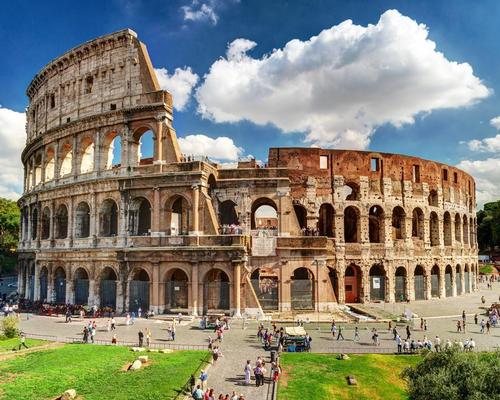28 Feb 2018
€5bn to be invested into Italian heritage and tourism
BY Tom Anstey

Italy’s biggest bank will inject €5bn (€6.1bn, £4.4bn) into the country’s heritage and tourism sectors, following a landmark deal with the country’s culture ministry to invest in projects over the next three years.
In a deal signed last month, Intesa Sanpaolo will use a large chunk of the financial package for restoration and redevelopment projects, making more buildings available for cultural use over the next three years.
Called the “Pact for Tourism 4.0”, the funding will also include money for training workers in the tourism sector, technological innovation, and modernisation of tourist accommodation.
“I'm really happy with this agreement which marks a change of direction in how tourism is dealt with; a sector in which we not only have to get out of a crisis, but also to steer a strong growth,” said the country’s minister for culture, Dario Franceschini.
"I say to entrepreneurs: invest in tourism. There's a need for both the public and private sectors to play their part."
According to its government, Italy’s tourism sector is worth an estimated €185bn (US$226.1bn, £163.3bn) a year, making up 11.8 per cent of the country’s GDP and 12.8 per cent of all employment in the country. In 2017, 117 million people visited Italy, with 403 million total overnight stays.
The Italian government has paid significant attention to the maintenance and restoration of its heritage sites in recent years, designating billions of euros to heritage projects.
In 2016, the government announced two major investments into the country’s heritage sites, earmarking €1bn (US$1.2bn, £883m) for cultural investments on projects across the country in addition to €300m (US$366.7m, £264.8m) to protect its most important heritage sites in need of restoration. Later that year, the government launched a campaign for the historic city of Rome, seeking €436m (US$532.9m, £384.9m) from corporate sponsors and donors to help restore historic sites in the city. Also during that year, the culture ministry announced plans to provide high-speed internet access at all of its 51 Unesco World Heritage Sites in an effort to boost its culture offering.
Last year, the government offered to give away more than 100 historic buildings for free on the understanding that any prospective owners must turn their site into a heritage attraction, in the hopes that the scheme would breathe new life into disused public buildings, including castles, farmhouses and monasteries.
Among the projects currently undergoing work, 2018 will see the completion of the restoration of the historic Rome Colosseum. Costing €25m (US$30.6m, £22m), the first phase of restoration included the surface cleaning of the northern and southern façades, and removing dirt and gunge created mainly by vehicle pollution, which gave the Colosseum a darkened look. Phase two of the restoration included work on the Colosseum’s underground vaults and passages – the areas where gladiators would wait before they entered the arena. By the end of this year, the arena’s floor will also be replaced with one that could support modern-day entertainment, potentially turning the cultural icon into an entertainment landmark, according to the culture ministry.
Close Window